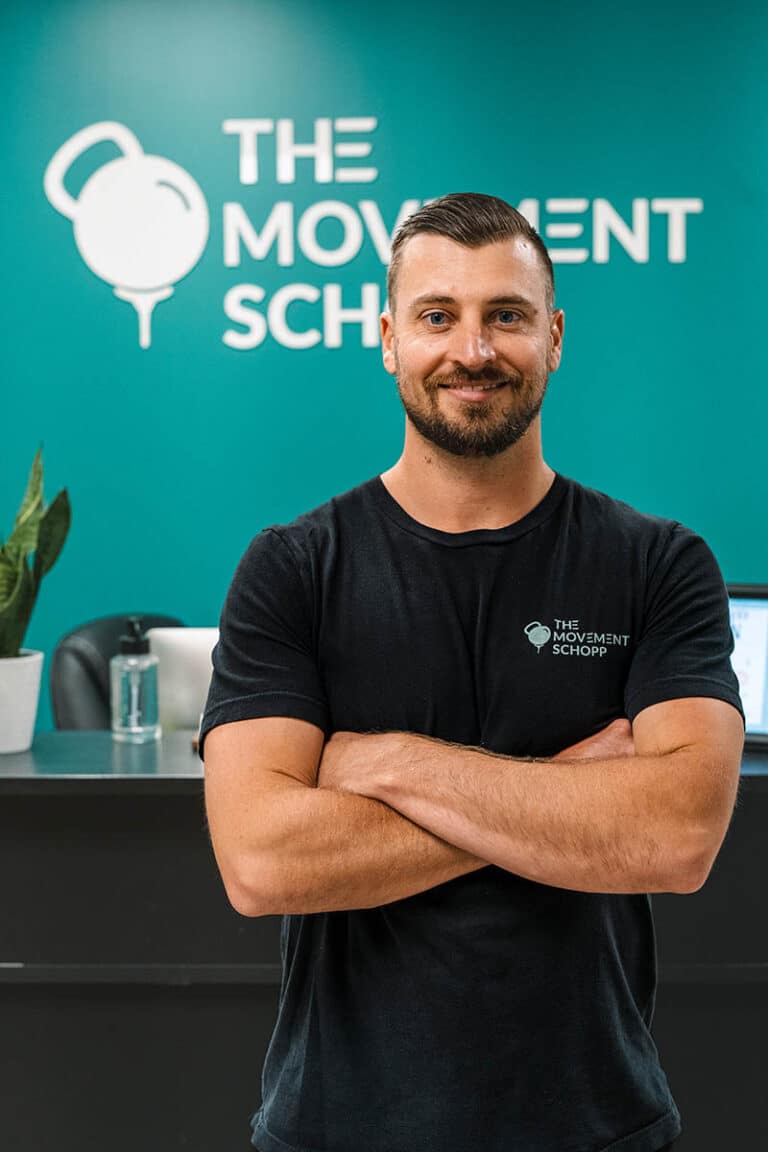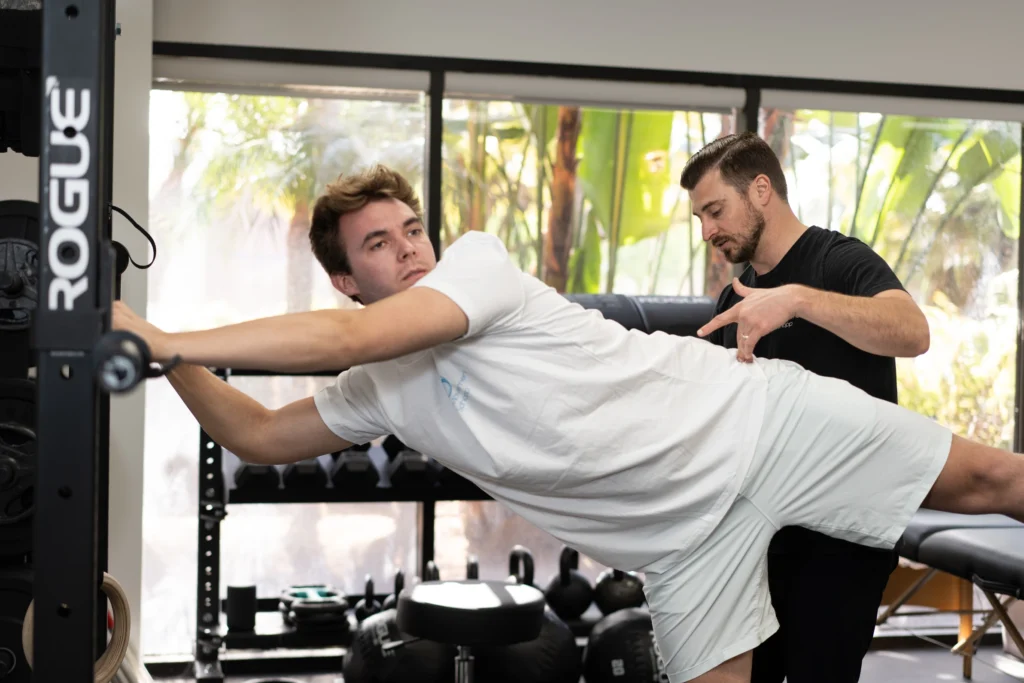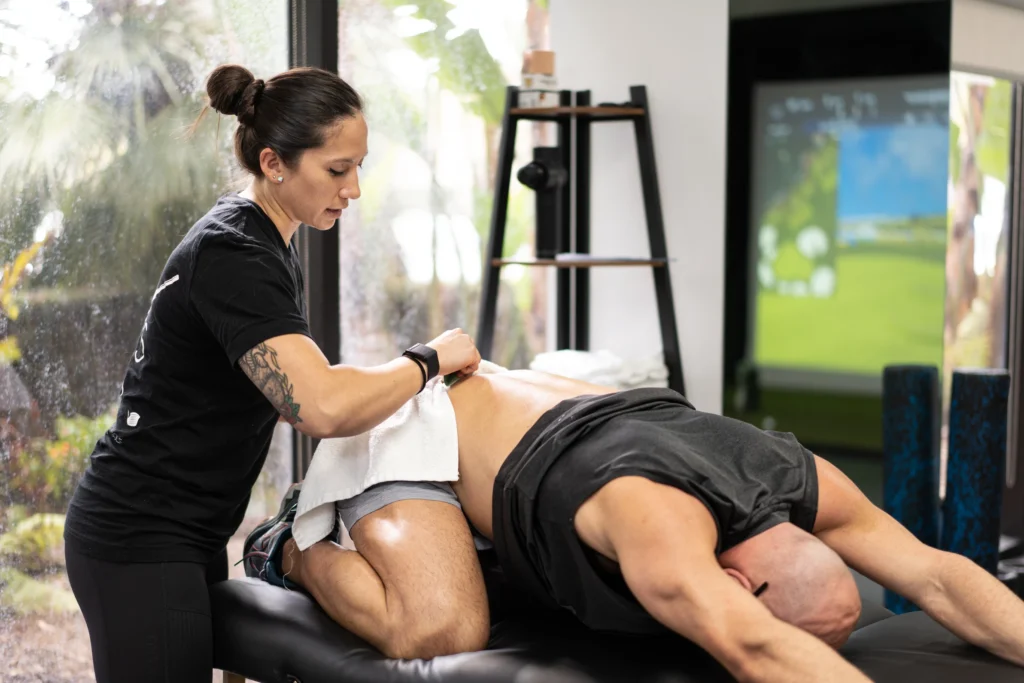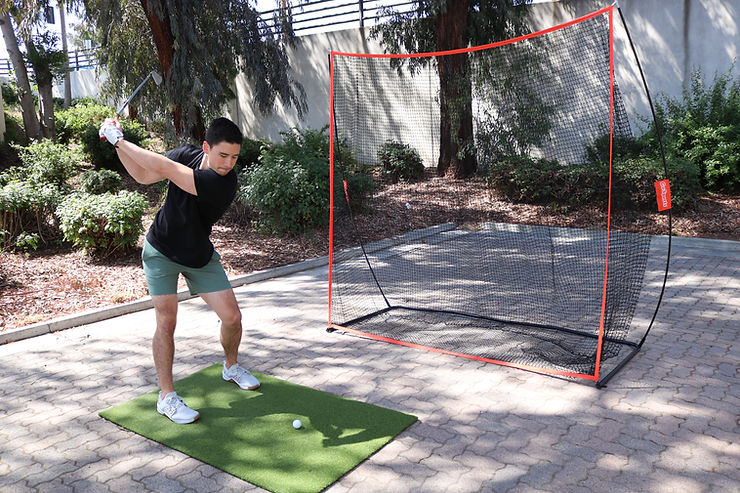Are you someone who golfs with pain? Is your golf game a little lackluster? Well, keep reading my friend. As golf has become increasingly popular amongst amateur athletes, golf injuries have unfortunately become more popular as well. It is reported that there is a lifetime injury incidence between 25.2% and 67.4% in amateur golfers1. As many as two thirds of amateur golfers may experience injury while playing golf. Common injuries may occur at the elbow, wrist, hand, or shoulder. The low back alone accounts for 18.3% to 36.4% of all golf injuries1! The question is, why is there such a high injury rate in golf and what can we do about it?
Some of the most common causes of injuries we see in the physical therapy world are:
- Overuse: repetitive motions that cause microtrauma over a period of time
- Load intolerance: Inability for tissues of the body to tolerate increased weight, resistance, or forces
- Improper training mechanics: Poor body positions or asymmetries during activity
Sadly, many golfers may run into all three of the above.
Historically, golf’s reputation has been coined the casual sport or hobby. You get to drive golf carts, there’s no running, enjoy a cocktail or two…But here’s the bitter truth; the golf swing is one of the most dynamic, powerful, and explosive movements in sport. Now, take that singular explosive movement and multiply it approximately 40 to 70 repetitions- this is only one round of golf, practice and training aside! The sport of golf has evolved and, consequently, so has the data alongside it. Studies have shown that a golf swing can produce compressive loads of up to 8 times a person’s body weight, or approximately 6,100 Newtons1. Compare this to Division 1 linemen who experience approximately 8,679 Newtons when hitting a practice sled. Yes, you may now deem yourself a bonafide athlete. To top that, the golf swing has been said to require more end-range of motion demands than any other sport 2. A proper backswing should result in nearly full rotation throughout the shoulders, spine, hips, and lower extremities, not to mention the rotational velocities of the pelvis and trunk that can reach speeds anywhere from 400 to 1000 degrees per second 3. That’s a lot to request of the body, we are only human after all. So, knowing this, ask yourself: how often are you training at maximal end ranges and extremely high rotational forces? See the problem here? When you place forces on the body it is not accustomed to, injuries become inevitable.
Let’s take Lebron James, for example. As a professional athlete, his job is to sprint up and down a court hundreds of times, shoot, dunk, cut, and block. He undoubtedly has a specific training, pre and post-game regimen to prepare him for the demands of a basketball game. Not to do so would be unsustainable and irresponsible for his body- putting him at risk for injury. There’s a reason why he’s been one of the top NBA players for almost 20 years. Before you say “Well that’s King James!” We recognize that while it’s not fair to compare amateur athletes to one of the greatest athletes in basketball history, it is still our responsibility to remain vigilant of the stresses we inflict onto our bodies and address them in order to protect ourselves from injury or pain.
What are you doing in order to prevent injury?
It seems simple, but a training regimen promoting flexibility, strength, power, and correction of faulty swing mechanics vastly reduces the risk of injury and improves performance 5.
Without getting into the specifics of each joint during a golf swing, mobility deficits are a great place to start during a golf screen. As stated earlier, putting your bodies into positions that are not natural or limited is a recipe for disaster. The body does an amazing job at compensating for deficits in order to carry out a task. Have you ever had back tightness so severe that it prevented you from tying your shoe? But hey, that shoe needs to be tied. Likely, there was some sort of awkward contortion act to accomplish this feat. The same can be said for attempting a “good” golf swing. If there are limitations, improper mechanics will take over and cause undue stress in various areas of the body. Imagine you are extremely limited with hip mobility into your backswing. Once you’ve reached the threshold of your hip movement, where do you think you’ll make up the remaining range of motion? If you guessed the lower back, you are more than likely correct. This repetitive increased and unnecessary load through the lower back may lead to injury.
Not only is it essential to have adequate mobility, but good stability is needed as well in order to control motion. With proper stability, body positioning and mechanics are more easily repeatable, leading to improvements in consistency and ball striking. Take a look at any PGA players’ swing and notice how stable they are throughout the entire movement. They’re perfectly balanced, have complete control, and demonstrate smooth transition of force. Their swings look beautifully effortless. When proper stability is achieved, less energy is required to execute a task.
Now for the advice you’ve all been waiting for: how to hit bombs. If you’ve checked mobility and stability off your list, we can now consider gaining strength. More strength leads to increased club and ball speed, and ultimately…hitting bombs. To build strength and efficient muscle adaptation, tissues need to be overloaded in a safe manner. Overloading tissues simply means placing greater stress on muscles/tendons in order for them to adapt to newly imposed demands. Think of strength as making your body resilient to forces placed upon the body.
Here at The Movement Schopp we have a saying, “strong bodies are harder to break”. If you are looking to golf without pain and improve your golf performance, ensuring longevity within the sport, contact us at The Movement Schopp.
If you are interested in golf specific training and daily workout routines check out the GOLFWOD app for one of the best golf fitness platforms out there. Use our discount code: SCHOPP20
References:
1. Vasta Performance Training and Physical Therapy. 2022. Golf Injuries – Vasta Performance Training and Physical Therapy. [online] Available at: <https://vastasports.com/golf-injuries/> [Accessed 3 June 2022].
2. Saliya, N., 2022. 1080 Quantum for golf swing training: Ben Shear on the right time for S&C. [online] 1080 Motion. Available at:
3. Steele KM, Roh EY, Mahtani G, Meister DW, Ladd AL, Rose J. Golf Swing Rotational Velocity: The Essential Follow-Through. Ann Rehabil Med. 2018;42(5):713-721. doi:10.5535/arm.2018.42.5.713
4. Meira EP, Brumitt J. Minimizing injuries and enhancing performance in golf through training programs. Sports Health. 2010;2(4):337-344. doi:10.1177/1941738110365129




